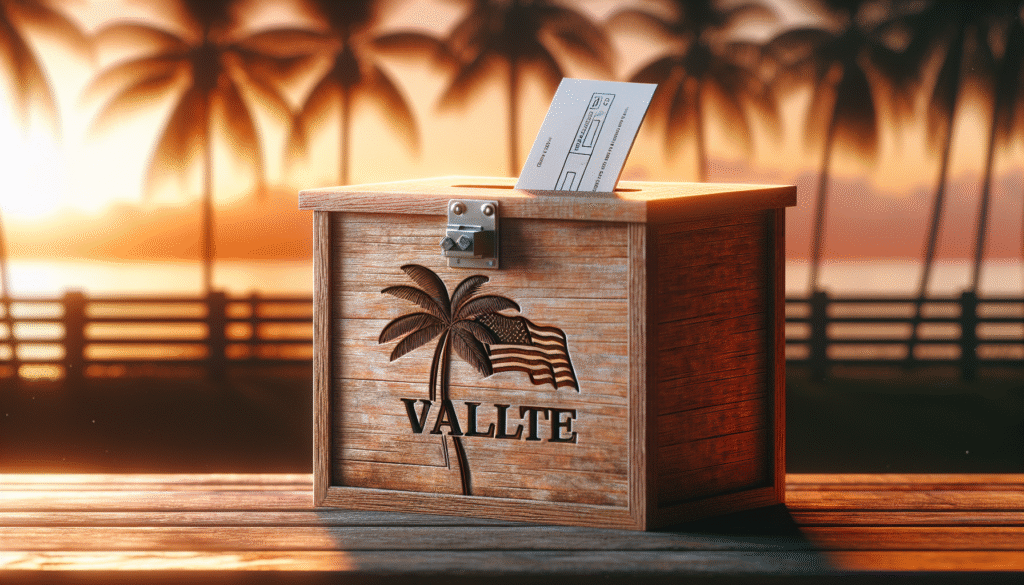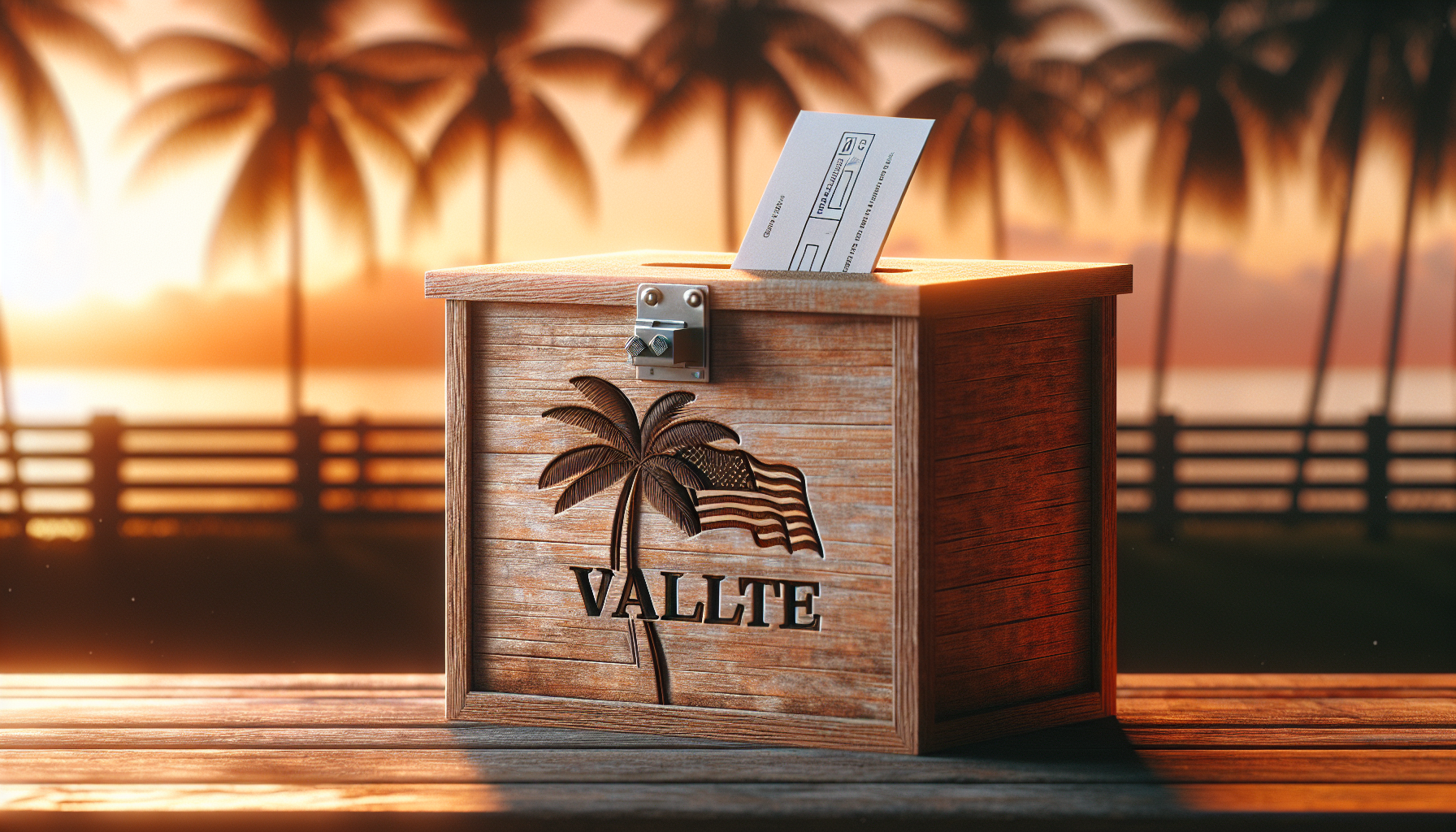?Have you noticed how the choices of voters who refuse to be boxed into a single party are changing the way politics works in Florida?
How Independent Voters Are Shaping Florida Politics
The rise of independent voters is one of the most consequential shifts in Florida’s political landscape over the last decade. You’ll see how their growing numbers, distinct priorities, and unpredictable behavior are forcing parties, candidates, and political strategists to rethink campaigns and policymaking.
The Rise of Independent Voters in Florida Politics
Independent voters—often registered as “No Party Affiliation” (NPA) in Florida—have grown steadily as a share of the electorate. As you follow state politics, you’ll notice that parties can no longer assume a fixed base; instead, they must earn support from a flexible block of voters who often decide close races.
Independents can influence outcomes in statewide contests, congressional battles, and key local races. Their rise has made Florida less predictable and has increased the stakes of targeted messaging and turnout operations.
Who Are “Independent” Voters?
You might picture independents as a single, cohesive group. In reality, NPA voters are a diverse set of people.
They include lifelong centrists, former members of major parties who left in frustration, younger voters who resist party labels, and older voters who feel parties no longer reflect their priorities. Some lean left or right on particular issues but don’t want to be tied to a party brand.
Understanding this diversity is essential: you can’t treat independents as a monolithic bloc when you’re crafting outreach or analyzing election dynamics.
Demographics and Profiles
Independents span age groups, education levels, and geographies. You’ll find they tend to be more concentrated among younger voters and in suburban areas, but they’re also present in rural and urban parts of the state.
Their political behavior can be more volatile: they may switch preferences between elections and are often swayed by short-term factors like the economy, personal pocketbook issues, or a candidate’s temperament.
Registration Trends and Composition
Tracking registration trends helps you understand the scale of the shift and where independents might determine outcomes.
Below is an illustrative table showing the approximate composition of registered voters in Florida. These figures are estimates intended to give you a sense of scale; for precise, up-to-date numbers, check the Florida Division of Elections.
| Registration Category | Approximate Number | Approximate Share of Registered Voters |
|---|---|---|
| Republican | 4.8 million | ~40% |
| Democrat | 4.2 million | ~35% |
| No Party Affiliation (Independent) | 2.8 million | ~23% |
| Minor parties/other | 0.3 million | ~2% |
You should note that the share of NPA has been growing faster than some of the major-party shares in recent years. That growth is what has drawn attention from both parties and analysts.
Geographic Patterns in Registration
You’ll often find higher concentrations of independents in suburban counties that have seen rapid demographic shifts. Parts of the I-4 corridor, some coastal counties, and growing exurban communities are areas where independents are especially consequential.
Rural counties may have fewer independents proportionally, but in some swing rural precincts those independent voters can still swing local outcomes.
Why Voters Choose No Party Affiliation
Understanding why people register as independent helps you tailor outreach and messaging that resonates.
- Desire for flexibility: Many want to vote for individuals rather than party labels. You’ll find this sentiment common among voters who prize candidate character and perceived competence.
- Dissatisfaction with party extremes: Voters who feel that both parties have moved toward extremes may choose independence as a protest or as a way to avoid being labeled.
- Younger generations: Younger voters often reject party labels and value pragmatic or issue-based positions.
- Local issues and personalities: In many local races, the candidate’s connection to community issues matters more than party status.
You should keep in mind that different independent cohorts respond to distinct appeals—economic messages may matter more to one group, while another may prioritize government competence or civil liberties.

How Independents Affect Election Outcomes
Your understanding of election dynamics needs to account for independents in at least three ways: vote margins, turnout, and the post-election coalition.
Margin Effects in Close Races
In close statewide or congressional races, the share of independents who lean to one candidate can determine the outcome. Because Florida has many competitive districts and a large number of key counties that swing between parties, a modest shift in independent support can flip seats.
When you look at statewide ballots where margins are narrow, independent voters often decide who wins.
Turnout Differences
Independents can be less predictable in turnout. You may see lower baseline participation among some NPA voters, but high-salience issues or energized campaigns can mobilize them.
Turnout operations that successfully motivate independents—through targeted digital ads, locally tailored mail or grassroots organizing—can yield outsized returns because those voters are less committed and more persuadable.
Post-Election Coalitions
When you win independent support, you’re building a coalition that might not be durable. You should be prepared for those voters to shift allegiances in subsequent elections if they feel promises weren’t kept or new issues arise.
Building longer-term loyalty often requires demonstrating policy wins, local responsiveness, and consistent messaging.
Case Studies: What Recent Elections Tell You
Looking at recent election cycles helps you see the practical role of independents in Florida.
- Major statewide contests in the early 2020s often featured a strong independent vote share that mirrored national or regional trends. Candidates who emphasized economic competence, public safety, or education sometimes attracted more independents.
- In gubernatorial and senatorial races, independents frequently split their votes: some leaning with one party for the top of the ticket while selecting the other party down-ballot, depending on local candidates and issues.
From these patterns, you should infer that winning independents often requires tailored appeals that speak to their priorities rather than party loyalty.
Policy Priorities: What Independents Care About
To win independent voters, you have to speak to what matters most to them. Here are issues that often rise to the top for independents in Florida:
- Cost of living and the economy: You’ll find economic issues—housing costs, inflation, jobs—are front of mind for many.
- Healthcare access and affordability: Independent voters often cite healthcare costs and the availability of providers as key concerns.
- Public safety and crime: Safety and law enforcement policies can sway independents, especially around the time of high-profile incidents.
- Education and local schools: Parents and community members are influenced by positions on school funding, curriculum, and school safety.
- Environment and climate impacts: In coastal and tourism-dependent communities, concerns about hurricanes, sea-level rise, and water quality can move independents.
- Infrastructure and transportation: Commuting, traffic, and transportation projects matter to suburban independents.
You should segment your messages by audience: retirees might prioritize healthcare and property taxes, while younger independents may prioritize housing affordability and climate resilience.
Table: Issue Priorities by Independent Cohorts (Illustrative)
| Independent Cohort | Top 3 Issues |
|---|---|
| Younger independents (18–34) | Cost of living, climate impacts, jobs |
| Middle-aged suburban independents (35–54) | Education, property taxes, commute/infrastructure |
| Older independents (55+) | Healthcare, Social Security/retirement security, public safety |
These generalizations will help you craft more precise outreach plans, but you should always support them with local polling or focus groups.
How Parties Are Responding
Both major parties are adjusting strategies to win independent voters. You’ll notice specific approaches from parties and candidates:
- Messaging moderation: Candidates sometimes emphasize pragmatic, moderate positions to attract independents who dislike partisan rhetoric.
- Local issue focus: Campaigns that highlight local concerns—hospitals, schools, roads—tend to appeal more to independents than generic national themes.
- Targeted advertising and micro-targeting: Digital campaigns aim messages at independent segments based on behavior, interests, and demographics.
- Candidate quality and branding: Parties invest in candidate vetting and training to ensure nominees can appeal beyond the base.
You should recognize that these responses are tactical and evolve with each cycle as parties learn what persuades independents in different regions.
Recruitment and Primary Strategy
Because Florida’s primary system typically restricts primaries to party registrants, parties face limits in directly engaging independents during the nomination phase. You’ll see parties sometimes prioritize candidates who can appeal beyond the base, knowing that independents will be decisive in the general election.
Parties also work to register new voters and re-engage previously registered independents who might align with their general-election messaging.

Campaign Tactics to Reach Independents
When you’re trying to persuade or mobilize independent voters, specific tactics can increase effectiveness:
- Localized message testing: Use polls and focus groups to test which messages resonate in particular counties.
- Story-driven outreach: Personal stories about how policies affect families or businesses can be more effective than abstract platforms.
- Cross-channel engagement: Combine door-knocking with social ads, text messaging, and localized mail to cover multiple touchpoints.
- Issue-specific coalitions: Partner with local groups—like small business associations or environmental organizations—to reach independents around shared concerns.
- Early voting mobilization: Encourage early voters through reminders and nonpartisan messaging that reduces friction.
You should measure and iterate quickly: independents respond to timely, relevant messages, so rapid A/B testing matters.
Polling and Surveying Independents
Polling independents is trickier than polling party-affiliated voters because independents are more likely to be undecided and more sensitive to question wording.
- Screen carefully: When polling, you should ensure your questions capture whether respondents are leaners—many “independents” consistently lean toward one party.
- Track short-term shifts: Independents can swing with immediate events (economic reports, crises). Regular tracking polls can spot momentum changes.
- Use turnout models: Because independents have variable turnout, you should model turnout scenarios rather than assuming static participation rates.
You’ll find pollsters increasingly report “leaners” and “likely voters” to give a clearer sense of how independents might behave in an election.
The Role of Media, Social Media, and Information Ecosystems
Media consumption shapes independent voter behavior. You should understand that independents often rely on a mix of mainstream outlets, local news, and social platforms.
- Local news and community outlets can be particularly persuasive for independents focused on neighborhood issues.
- Social media amplifies targeted messaging but also misinformation; independents who aren’t strongly attached to a party can be more susceptible to sudden narratives that fit their concerns.
- Fact-checking and timely rebuttals are important, because independents may quickly change opinions based on a viral claim—or be turned off by perceived negativity.
Campaigns and civic groups that help independents get reliable information about candidates and policies can increase the quality of political decision-making.
Legal and Institutional Factors That Affect Independents
Several institutional factors shape how much influence independents wield, and you should understand these constraints.
- Primary rules: When primaries are closed, independents can’t participate in nominating contests for the major parties, limiting their influence on candidate selection.
- Ballot design and access: The structure of ballots, ballot initiatives, and local referenda can provide direct routes for independents to express preferences outside the party system.
- Voter registration rules and deadlines: Administrative rules affect who’s registered in time to vote and whether new independents can participate in a given election.
- Redistricting: How district lines are drawn affects whether independents are in competitive districts or safe seats.
You should track changes in these areas because they can either amplify or dampen the impact of independent voters.
Local Races and Ballot Initiatives: Where Independents Matter Most
You’re likely to see independents exerting outsized influence in local races and ballot initiatives. Local contests often hinge on specific, tangible issues that independents care about—like school funding or water quality—so turnout and persuasion efforts here can be particularly effective.
Ballot initiatives can mobilize independents in surprising ways. You should watch for initiatives on taxes, utilities, or regulatory issues that cut across partisan lines.
Challenges and Opportunities for Civic Engagement
If you’re trying to increase independent engagement, you face both challenges and opportunities.
Challenges:
- Varied priorities make one-size-fits-all outreach ineffective.
- Limited turnout predictability complicates planning.
- Misinformation can swing undecided independents.
Opportunities:
- Independents often make choices based on specific issues, so targeted campaigns can win them.
- Localized, solution-focused messaging can create durable voter relationships.
- Nonpartisan, informational drives (e.g., candidate forums, issue explainers) can position you as a trusted source.
You should focus on building credibility and addressing practical concerns to convert interest into votes.
Looking Ahead: Trends to Watch
As you watch future election cycles, keep an eye on several trends that will shape the role of independents:
- Continued growth in NPA registration, especially among younger voters.
- Increasing sophistication of targeted advertising and micro-segmentation.
- The evolving impact of climate-related events on coastal independent voters.
- Shifts in the economy and housing market that affect suburban independent preferences.
- Potential reforms to primary rules and voting administration that could change independent participation patterns.
These dynamics will determine whether independents continue to be the kingmakers in Florida or whether party realignment reduces their sway.
Practical Tips for Campaigns and Organizers
If you’re organizing or campaigning and want to connect with independent voters, here are practical steps to consider:
- Invest in local polling to identify persuadable independent clusters.
- Craft messages that emphasize competence, pragmatic solutions, and local impact.
- Use storytelling and real-life examples instead of ideological frames.
- Build coalitions with nonpartisan community groups to reach independents naturally.
- Prioritize early outreach and multiple contact methods to improve turnout.
- Track response data and reallocate resources quickly to promising areas.
You’ll find that consistent, respectful engagement often beats negative ads when persuading independents.
What You Can Do as a Voter or Community Member
If you’re an independent voter or someone trying to engage them, here are steps you can take:
- Stay informed: Read local news and candidate platforms and use reputable fact-checking resources.
- Attend local forums and candidate events: These are places where you can ask direct questions and evaluate candidates beyond headlines.
- Volunteer for issue-based groups: Working on local problems helps you understand how policy translates into practical outcomes.
- Encourage registration and turnout among friends and neighbors, especially around local elections where each vote has more impact.
When you engage thoughtfully, you help raise the level of debate and make it easier for independents to make informed choices.
Conclusion
You should view independent voters as a diverse, influential, and increasingly essential part of Florida’s political future. Their growth has changed how campaigns are run, how parties craft messages, and how local issues get prioritized.
Winning independent support requires nuance, local focus, and consistent outreach. If you’re a candidate, organizer, or engaged citizen, you’ll need to pay attention to this group because they will often decide the tight races and help shape policy priorities in Florida for years to come.
If you want, I can help you design targeted messaging for a specific Florida region, draft a survey to better understand independent priorities in your county, or summarize recent local polling to identify persuadable independent segments. Which of those would you like to start with?
